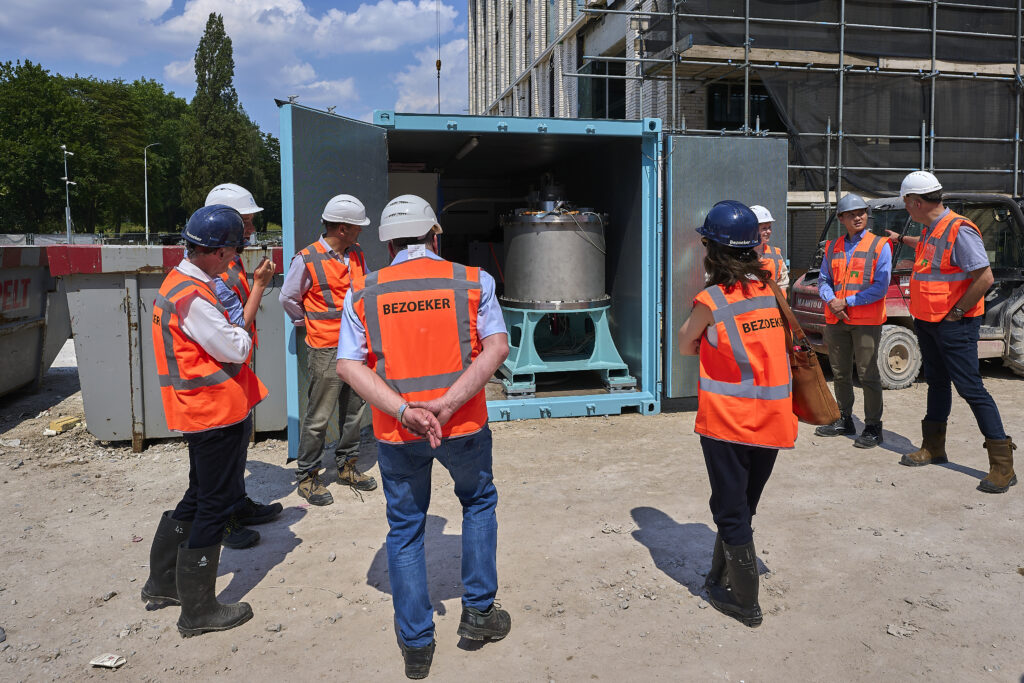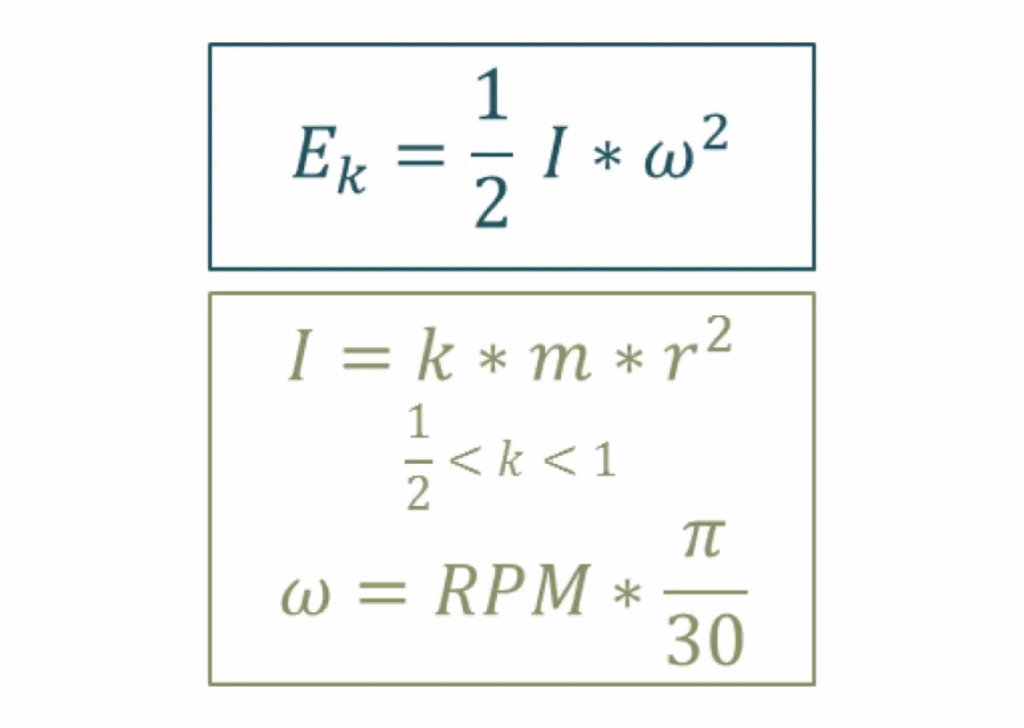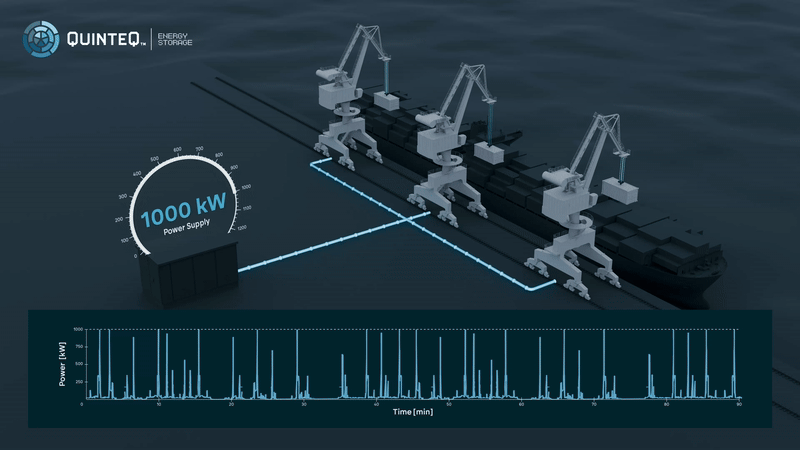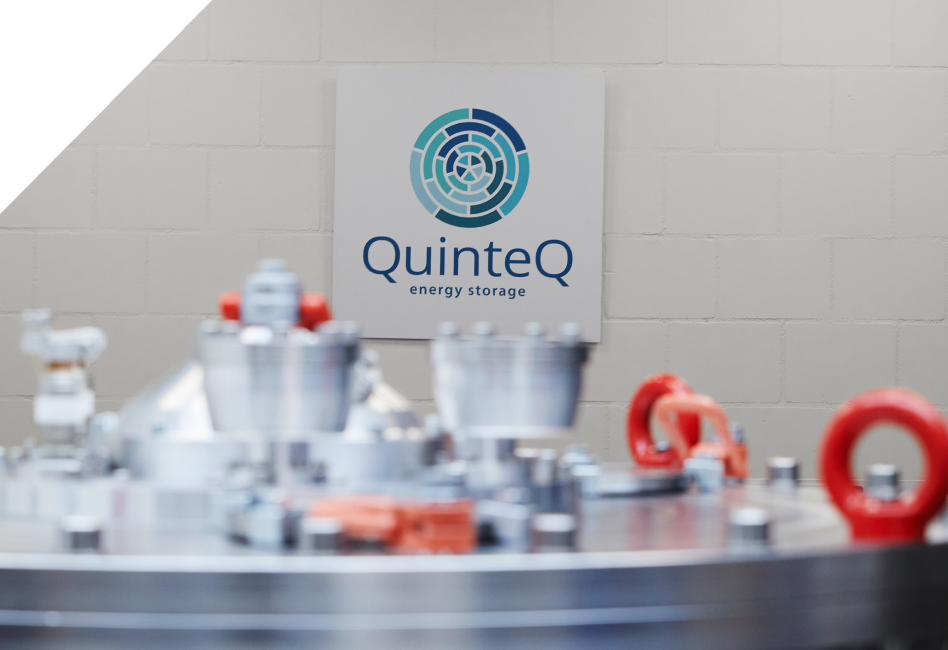Summary
Flywheels are mechanical energy storage systems that store electricity as rotational motion, allowing them to deliver short bursts of high power with exceptional efficiency and lifespan. This article explains how flywheels work, why they excel at peak shaving in ports, construction sites, and microgrids, and what makes QuinteQ’s flywheel technology perfect for sustainable, high-performance energy management. You’ll learn about the physics behind kinetic storage, the balance between speed and mass, and the real-world advantages of flywheels compared to batteries for heavy-duty, high-cycle applications.
Introduction
The flywheel. It’s not a new invention, but it’s one that’s finding new life in today’s evolving energy landscape. In this article, we’re breaking down what a flywheel actually is, how it works, and why it’s a strong candidate for peak shaving power peaks in ports and construction sites.

How do flywheels work?
Essentially, a flywheel is a mechanical device that stores energy in the form of rotational motion—this is what we call kinetic energy. Imagine a heavy wheel spinning rapidly inside a vacuum: this spinning mass together with the drive can store or deliver energy rapidly when needed. Ideally, a flywheel should cycle as much as possible to work efficiently and furthermore should be loss-optimized to achieve best possible round-trip efficiency.
The basic mechanics of energy storage with a flywheel can be broken down into three steps:
- Absorb: This is where electric energy provided to the flywheel is converted into kinetic energy, and the rotor begins to spin faster.
- Store: Here, the flywheel holds the energy in the form of the rotor’s rotational motion (kinetic energy). Thanks to the low-friction vacuum environment, the rotor continues to spin with minimal energy dissipation.
- Deliver: When energy is needed, the motor runs as a generator, and the spinning rotor decelerates. This deceleration converts the rotor’s kinetic energy back into electrical energy, which is then sent out to power something.
When electric energy is supplied to the drive, such as from the grid, a generator or any other source, it powers a motor that accelerates the rotor. The process is reversed when energy is needed. Hence, the motor is running as a generator and decelerates the rotor. Now, the kinetic energy is transferred back into electrical form to its origin. The result? A fast, powerful, and sustainable way to absorb, store, and deliver energy.
As such, the technology a flywheel requires is highly advanced:
- The rotor spins inside a vacuum to reduce air drag.
- Bearings (they can be of mechanical, fluid, magnetic, hybrid, or superconducting type) are used to suspend the spinning rotor inside the vacuum chamber.
- Materials can range from high strength steel alloys – for low speed applications – to carbon fiber reinforced plastic composites – for high speed applications.
Essentially, flywheels store energy by accelerating a rotor and releasing it as the rotor slows, enabling rapid charge and discharge with minimal loss.
Speed vs. Mass

Key performance indices of a flywheel rotor are the spinning speed and the mass. The total energy stored in a flywheel scales linear to the mass and quadratically to the spinning speed of the rotor. This means that increasing the speed of the rotor significantly gains energy compared to increasing its mass. However, entering the high-speed regime causes additional development challenges for a flywheel system in terms of materials, components and stability. Low-speed (and therefore heavier) applications can benefit from scalability and off-the-shelf components that are already developed and tested. These mass-dependent flywheels are best for permanent installations in below-ground bunkers. However, some applications require a smaller footprint and a more flexible set-up. This can be done by achieving a balance between speed and mass, making the rotor diameter small enough to design a more flexible and versatile flywheel that can be installed in regular shipping containers.
Flywheels vs. conventional batteries
There are many different energy storage devices available today. So what makes flywheels special?
- Power output: flywheels are capable of delivering high power bursts in a short period of time.
- High round trip efficiency: low energy loss during absorbing and releasing energy.
- Sustainable design: use of recyclable materials, leading to a minimized carbon footprint and reducing the need for rare earth materials.
- Extended lifetime: unlike chemical batteries, flywheels can have a very long service life, often outliving chemical batteries two- or threefold.
For more in-depth information on the pros and cons of flywheels and conventional batteries, check out our blog.
Where are flywheels used?
Flywheels can charge and discharge quickly, which makes them ideal for situations where power needs to be delivered from milliseconds up to minutes, causing high cycle counts. Situations where this is essential include:
- Peak shaving: When power demand spikes—like when cranes at a terminal start operating—flywheels can step in and deliver a burst of power, reducing the load on the grid.
- Microgrid support: Especially useful in remote or off-grid locations, flywheels help balance power when there’s no large central grid.
- Fuel savings: By capturing and reusing brake energy, flywheels help save energy consumption. Moreover, when smoothening out generator load curves, flywheels help save fuel consumption in hybrid energy setups.
- Grid stabilisation: Flywheels can instantly deliver power to smooth out fluctuations and keep the grid running steadily.
With the acceleration of the energy transition, technologies like flywheels are key to stabilizing power systems without relying on rare earth minerals or chemical degradation. Flywheels are a key enabler for sustainable and circular infrastructure in ports, construction sites, and microgrids.
Why flywheels are perfect for peak shaving
Peak shaving is all about reacting fast to reduce short bursts of very high power demand. These short peaks often overload grids and lead to expensive grid upgrades or higher usage costs. In this case flywheels can help out because:
- They can charge and discharge quickly.
- They are designed for high cycle counts.
- They react immediately, delivering power in a fraction of seconds.
Chemical batteries have been used to peak shave power peaks in the past, but they have proven to be less suitable for intensive peak behaviour such as with cranes. The high C-rating of the power peaks degrades the cells of batteries fast, and their reliance on chemical reactions to store and release energy means that they are sensitive to depth of discharge and lose power over time, which is a problem for the high-cycle requirements of peak shaving. Flywheels are completely insensitive to this, making them a more economic and ecological option.

QuinteQ’s flywheel
Here at QuinteQ, we are pioneering a scalable and application-tailored flywheel energy storage system that is containerized and easy to be transported, making it convenient for port terminals, construction sites, and microgrids. Our flywheel can deliver power up to 300 kW having an energy content of 4kWh and a response time of <40ms. A single flywheel can fit within a 10-foot container, and more flywheels can be combined in a 20ft container to deliver even more power (up to 4MW). The flywheels are designed for a service life of +15 years, delivering more than 350.000 cycles, and have been tested with partners in both the port and construction sectors. Pretty good for a peak shaving powerhouse.
In summary
Flywheels provide a sustainable, high-efficiency solution for peak shaving and grid stabilization. With rapid response times and long lifespans, they outperform chemical batteries in heavy-duty, high-cycle environments. QuinteQ’s modular systems make this technology accessible for ports, construction sites, and microgrids worldwide.
Have any questions about how our flywheels work? Send us an email at info@quinteqenergy.com, or send us a message through our LinkedIn!


